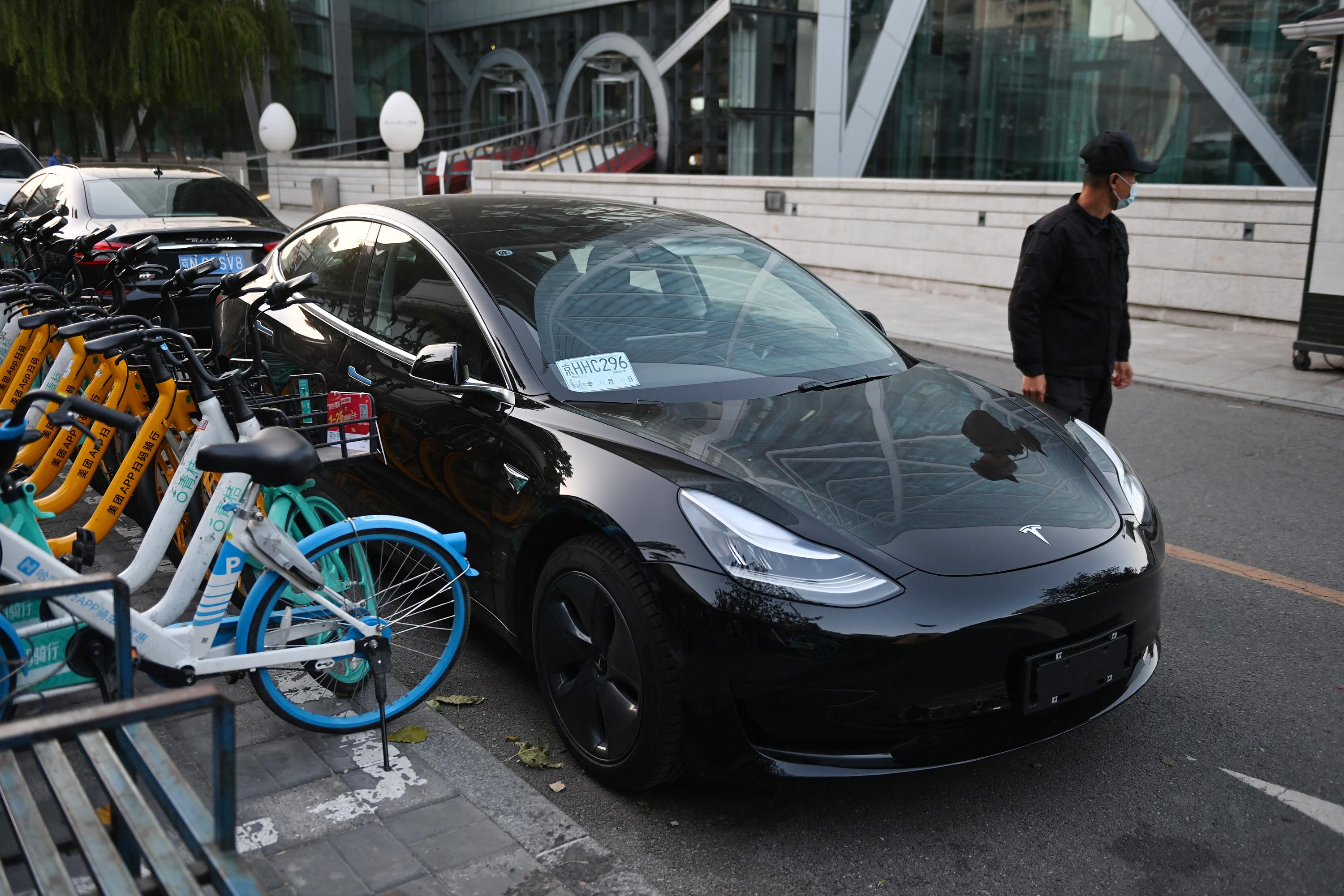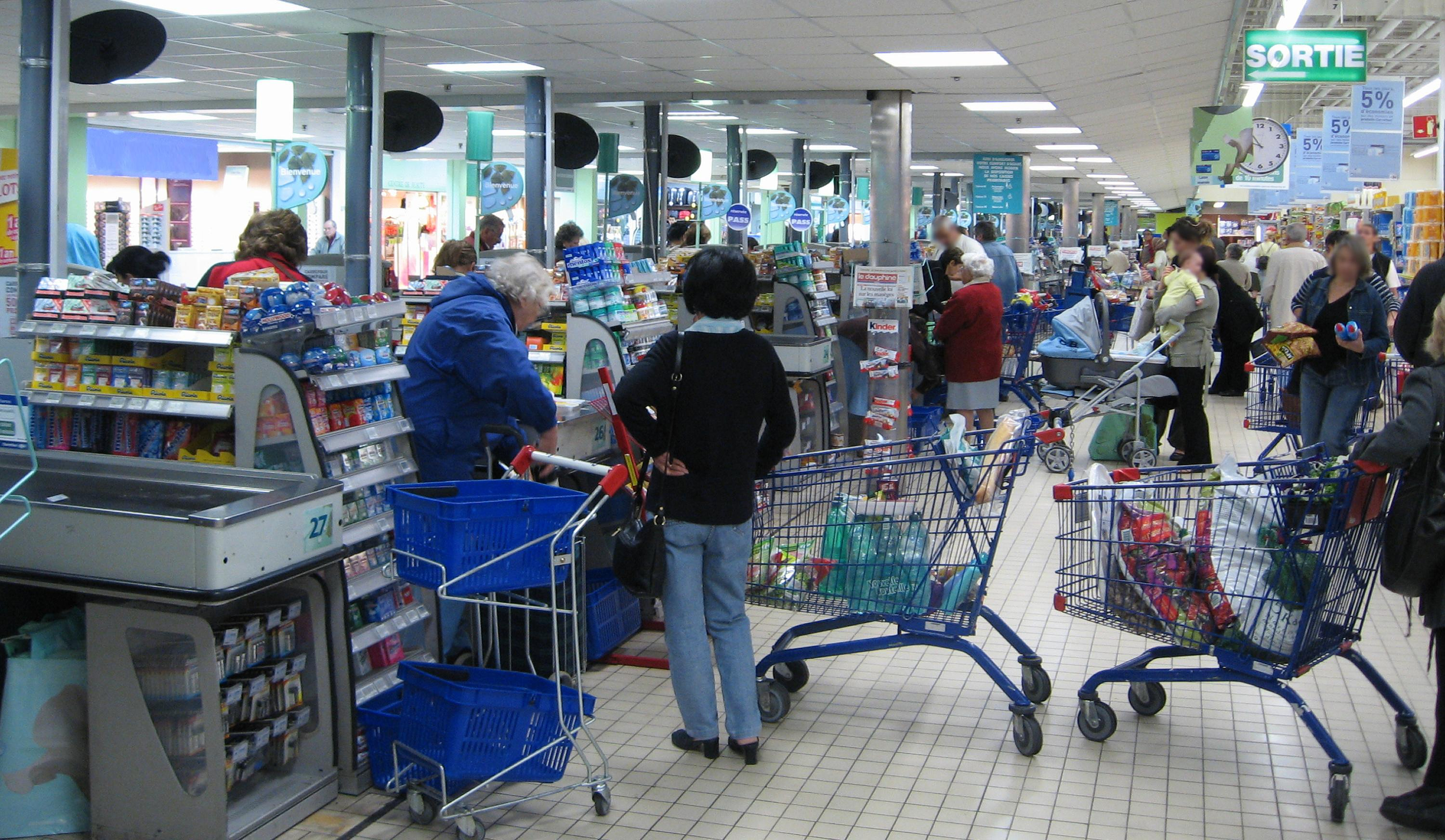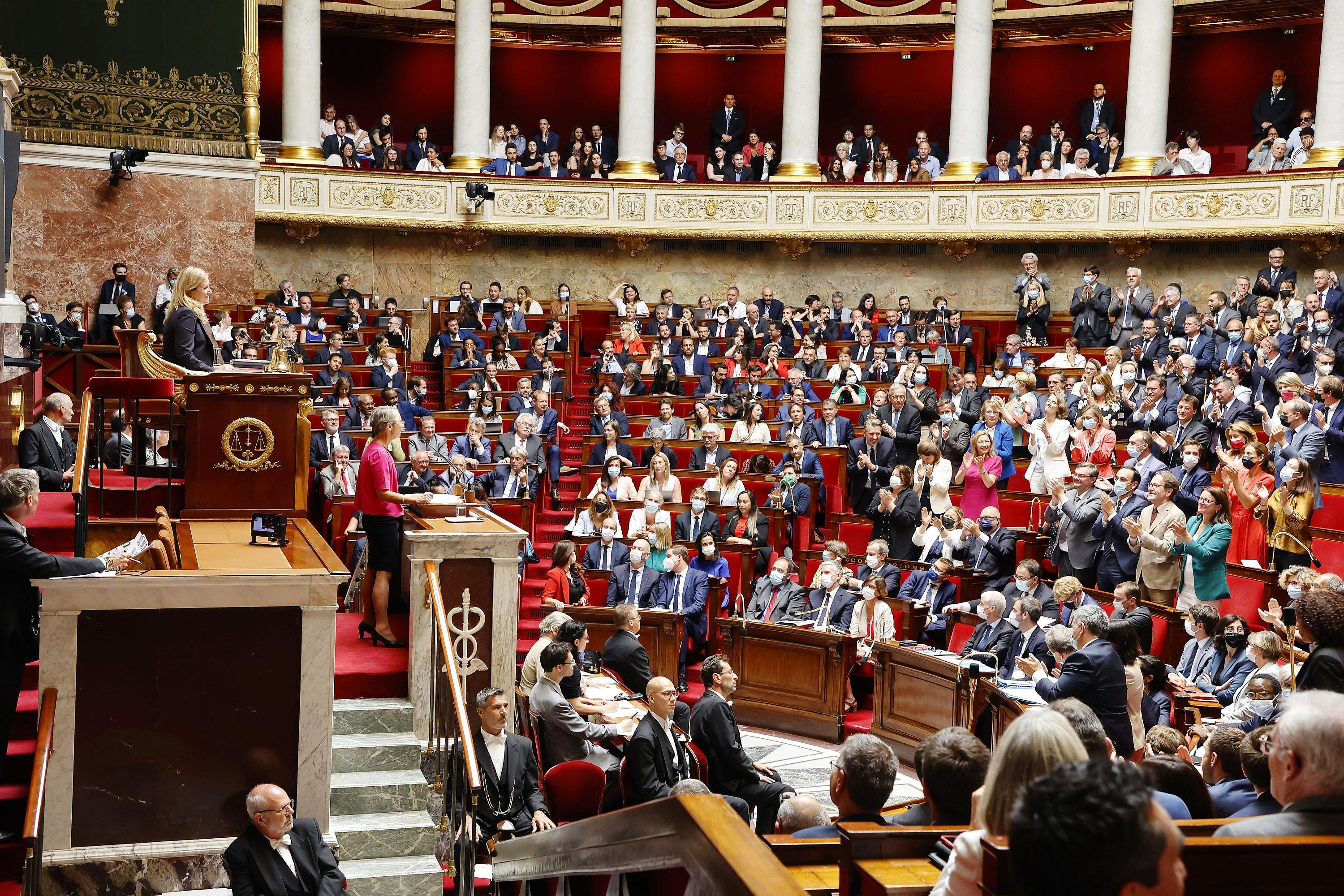Due to the Paris 2024 Olympic Games (July 26-August 11), the specifications for the 2024 Tour de France were constrained, including an early start of one week. And a new departure from abroad (the 26th), the third in a row, Florence arriving after Copenhagen (2022) and Bilbao (2023). The Tour will start from Italy for the first time, a hundred years after the first victory of an Italian on the Grande Boucle, Ottavio Bottecchia. “Florence, one of the most beautiful cities in the world, was a candidate for 2014. At the time, we chose to leave as close as possible to the first victory of a Briton in the Tour de France, so after the victory for Wiggins in 2012, to leave Yorkshire two years later. It was a phenomenal popular success. The mayor of Florence sent me a very touching video at the end of March 2020, during the pandemic, writing ''Florence so beautiful and so deserted. I haven't forgotten my dream of the Tour de France. This was done with Dario Nardella, the mayor of Florence and Stefano Bonaccini, the president of Emilia-Romagna. With, during the 1st stage, Florence-Rimini, 3600 m of positive altitude difference (more than last year in Bilbao),” recalls Christian Prudhomme, director of the Tour de France.
During the first three stages, the Tour will celebrate Italy, a legendary country of cycling, one hundred years after the first victory of an Italian on the Tour (Ottavio Bottecchia). With a nostalgic triptych (1st stage: Florence-Rimini; 2nd stage: Cesenatico-Bologna, for punchers with a stage which will pass, with a circuit, twice by the sanctuary of San Luca, the finish coast of the tour d 'Émilie; the 3rd stage Plaisance-Turin being for the sprinters), which will successively pay tribute to Gino Bartali, Gastone Nencini (1960 Tour winner), Marco Pantani and Fausto Coppi.
In 2023, Jonas Vingegaard stunned the Tour during the only time trial in Combloux. A supersonic performance which had seen questions arise... In 2024, two times appear on the map: Nuits Saint-Georges - Gevrey-Chambertin (25 km; 7th stage) designed for exercise specialists and Monaco-Nice ( 34 km; 21st stage), reserved, at the end, for strong men. That’s 59 km in total.
July 16, 1960, during the Besançon-Troyes stage, the Tour peloton passed through Colombey-les-Deux-Églises. General de Gaulle, the President of the Republic, on vacation at his home in La Boisserie, sits on the edge to watch the Tour pass by. The platoon stopped to greet him. Colombey-les-Deux-Eglises is on the Tour map for the first time. “It was Nicolas Lacroix, president of the Haute-Marne Council, who suggested it to me. I would never have dared to ask myself, I find it phenomenal. Especially since we will not be going to the landing beaches in 2024. The Tour is the biggest cycling race in the world but it is an event that is in life and in our history, so having a link with the 80th anniversary of the Landing was essential for me. Also this link, it is philosophical, we are not on the landing beaches, we are not in Normandy but we are going to the village of General De Gaulle for the very first time at the foot of the cross of Lorraine . So, it’s strong,” rejoices Christian Prudhomme, the director of the Tour de France.
A large loop around Troyes (9th stage; 199 km) will throw the white path runners under the wheels. “They are essential there because we break the litany of flat stages due to the geography of France. 14 white paths and 32.2 km (the longest portion is 4.2 km; there are six paths in the last 30 km), in the vineyards but also between corn fields, sunflower fields, there are a mount of wind turbines, which gives the impression of being on Paris-Roubaix, with the notable difference of the cobblestones. They are very beautiful, often followed or preceded by ribs. There are people who will be against it. Others will say it's great. We put the white paths on Paris-Nice in Vendôme in 2016, Arnaud Démare won,” recalls Christian Prudhomme.
The 11th stage Evaux-les-Bains-Le Lioran (211 km) promises a spectacle. After a succession of devilish, rough little roads, the Col de Néronne (1242 m; 3.8 km at 9.1%), the Puy Mary (1589 m; 5.4 km at 8.1%), the Col de Perthus (1309 m; 4.4 km at 7.9%), the Col de Font de Cère (1294 m; 3.3 km at 5.8%), before arriving at Lioran (1242 m). A stage for punchers. A day which could serve the daring and serve those who have ambitions for the general classification but regularly suffer above 2,000 m.
The 14th stage (Pau-Saint-Lary-Soulan; 152 km) will pass through the famous Tourmalet (2115 m; 19 km at 7.4%), the Hourquette d'Ancizan (1564 m; 8.2 km at 5.1 %), before the climb of Saint-Lary-Plat d'Adet (1669 m; 10.6 km at 7.9%) for the 50th anniversary of Raymond Poulidor's last victory at Pla d'Adet. “Stéphane Boury (responsible for arrivals at the Tour de France) has found the real Raymond Poulidor line. The town of Saint-Lary will install a life-size statue of Poupou,” announces Christian Prudhomme.
During the 19th stage (Embrun-Isola 2000), the peloton will pass at the foot of the Mont-Dauphin citadel before attacking the slopes of the Col de Vars pass (2109 m; 18.8 km at 5.7%), the Col de La Bonnette (2802 m, the roof of the Tour; 22.9 km at 6.9%). And to finish the climb to Isola 2000 (2024 m; 16.1 km at 7.1%), third pass at more than 2,000 m during the day. In the setting of the Mercantour National Park.
The 20th stage (Nice-Col de Couillole; 133km) will take the bends of the Col de Braus, a pass included in the Tour route before the First World War, which was very regularly on the menu and which the riders have not crossed for 60 years (1002 m; 10 km at 6.6%), before the Col de Turini (1607 m; 20.7 km at 5.7%), then the Col de la Colmiane (1500 m; 7.5 km at 7, 1%). The Col de la Couillole (1678 m; 15 km at 7.1%), the final point, has only seen one passage in the Tour in 1975, marked by a victory for Lucien Van Impe.
Since 1903, the Tour de France has traditionally ended in Paris (with the exception of the first edition which ended in the Paris region, in Ville d'Avray), at the Parc des Princes from 1904 to 1967, then at La Cipale until 1974, before parading on the Champs-Elysées since 1975. But due to the organization of the Paris 2024 Olympic Games (opening ceremony on July 26, just 5 days after the arrival of the Tour), the Tour innovates. With an epilogue in Nice. With the added bonus of a time trial. The last time a time trial completed the Tour was in 1989 with 25 km between Versailles and Paris. An unforgettable duel between Greg LeMond and Laurent Fignon. In the final general classification, the American had stripped the Frenchman of his precious yellow jersey for 8 seconds. The smallest gap in the history of the event. The time of the 21st stage will go from Monaco to Nice (34 km), taking the Col de la Turbie (8.1 km at 5.6%) and the Col d'Eze (1.6 km at 8.1% ). Symbols of a Tour which will include difficulties from the first to the last day.

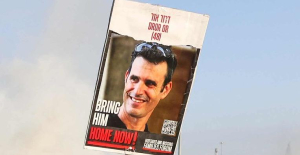 Who was Dror Or, the Israeli father who died as a hostage in the hands of Hamas?
Who was Dror Or, the Israeli father who died as a hostage in the hands of Hamas? “Pay in cash”: at his trial, Donald Trump faced with an embarrassing recording
“Pay in cash”: at his trial, Donald Trump faced with an embarrassing recording Italy: a grandmother accidentally serves a bottle filled with wine to a baby, he has an alcoholic coma
Italy: a grandmother accidentally serves a bottle filled with wine to a baby, he has an alcoholic coma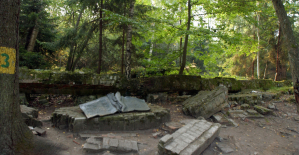 The mysterious skeletons of Hermann Göring's villa
The mysterious skeletons of Hermann Göring's villa Children born thanks to PMA do not have more cancers than others
Children born thanks to PMA do not have more cancers than others Breast cancer: less than one in two French women follow screening recommendations
Breast cancer: less than one in two French women follow screening recommendations “Dazzling” symptoms, 5,000 deaths per year, non-existent vaccine... What is Lassa fever, a case of which has been identified in Île-de-France?
“Dazzling” symptoms, 5,000 deaths per year, non-existent vaccine... What is Lassa fever, a case of which has been identified in Île-de-France? Sánchez cancels his agenda and considers resigning: "I need to stop and reflect"
Sánchez cancels his agenda and considers resigning: "I need to stop and reflect" After 50 years of existence, “Numbers and Letters” will disappear from the France Télévisions channels
After 50 years of existence, “Numbers and Letters” will disappear from the France Télévisions channels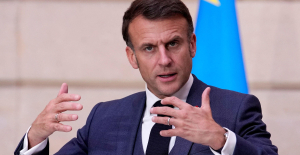 Macron reaffirms his desire not to increase taxes
Macron reaffirms his desire not to increase taxes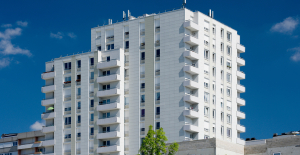 The expulsion of families of delinquents from HLM reinforced in the future Housing law?
The expulsion of families of delinquents from HLM reinforced in the future Housing law?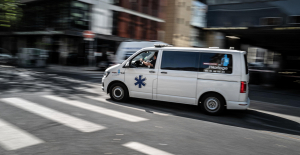 Health carpooling, this source of savings which arouses the ire of patients and taxis
Health carpooling, this source of savings which arouses the ire of patients and taxis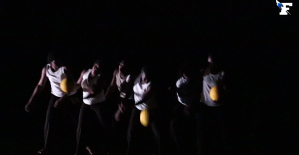 The incredible musical juggling of the Basketteuses de Bamako
The incredible musical juggling of the Basketteuses de Bamako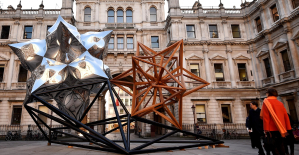 Death of Frank Stella, the most spectacular painter-sculptor
Death of Frank Stella, the most spectacular painter-sculptor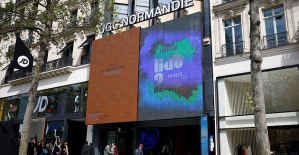 Film buff's memories of the Champs-Élysées, by Éric Neuhoff
Film buff's memories of the Champs-Élysées, by Éric Neuhoff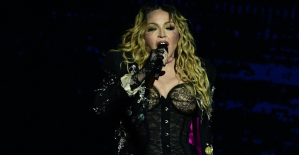 Madonna thrills Brazilians on Copacabana beach
Madonna thrills Brazilians on Copacabana beach Omoda 7, another Chinese car that could be manufactured in Spain
Omoda 7, another Chinese car that could be manufactured in Spain BYD chooses CA Auto Bank as financial partner in Spain
BYD chooses CA Auto Bank as financial partner in Spain Tesla and Baidu sign key agreement to boost development of autonomous driving
Tesla and Baidu sign key agreement to boost development of autonomous driving Skoda Kodiaq 2024: a 'beast' plug-in hybrid SUV
Skoda Kodiaq 2024: a 'beast' plug-in hybrid SUV The home mortgage firm rises 3.8% in February and the average interest moderates to 3.33%
The home mortgage firm rises 3.8% in February and the average interest moderates to 3.33% This is how housing prices have changed in Spain in the last decade
This is how housing prices have changed in Spain in the last decade The home mortgage firm drops 10% in January and interest soars to 3.46%
The home mortgage firm drops 10% in January and interest soars to 3.46% The jewel of the Rocío de Nagüeles urbanization: a dream villa in Marbella
The jewel of the Rocío de Nagüeles urbanization: a dream villa in Marbella Facing Jordan Bardella, the popularity match turns to Gabriel Attal’s advantage
Facing Jordan Bardella, the popularity match turns to Gabriel Attal’s advantage Europeans: a senior official on the National Rally list
Europeans: a senior official on the National Rally list Blockade of Sciences Po: the right denounces a “drift”, the government charges the rebels
Blockade of Sciences Po: the right denounces a “drift”, the government charges the rebels Even on a mission for NATO, the Charles-de-Gaulle remains under French control, Lecornu responds to Mélenchon
Even on a mission for NATO, the Charles-de-Gaulle remains under French control, Lecornu responds to Mélenchon These French cities that will boycott the World Cup in Qatar
These French cities that will boycott the World Cup in Qatar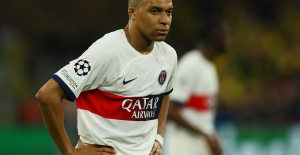 Paris 2024 Olympics: Mbappé does not “think much” about the Games
Paris 2024 Olympics: Mbappé does not “think much” about the Games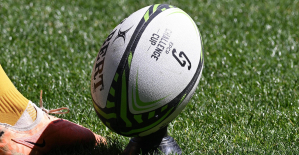 Rugby: a young pillar of the Vienna club, in the 3rd division, died in a car accident
Rugby: a young pillar of the Vienna club, in the 3rd division, died in a car accident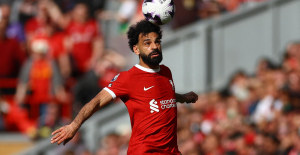 Premier League: beaten by Liverpool, Tottenham moves away from the Champions League
Premier League: beaten by Liverpool, Tottenham moves away from the Champions League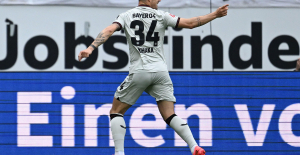 Bundesliga: Leverkusen easily disposes of Frankfurt, 48th consecutive match without defeat
Bundesliga: Leverkusen easily disposes of Frankfurt, 48th consecutive match without defeat




